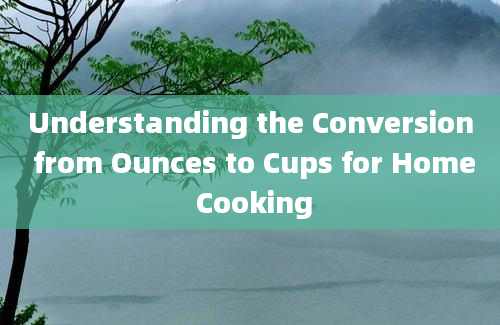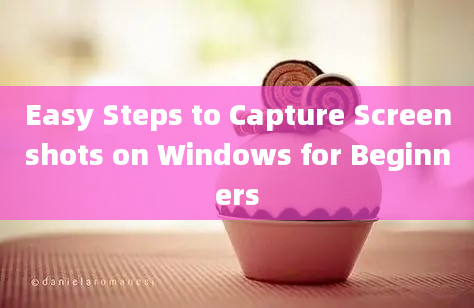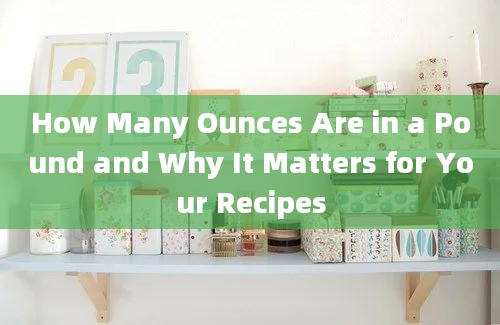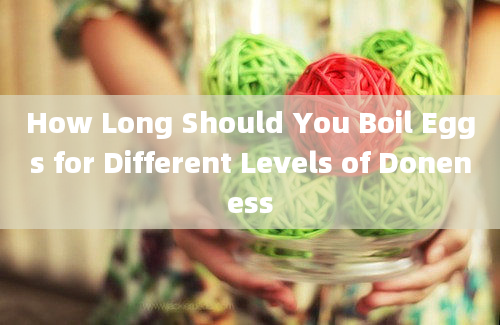Understanding the Conversion from Ounces to Cups for Home Cooking

Accurate measurements are crucial in home cooking to ensure the desired outcome of your culinary creations. One common conversion that often puzzles home cooks is the transition from ounces to cups. Understanding this conversion is essential for following recipes accurately. This article delves into the details of converting ounces to cups, providing you with the necessary knowledge and tools to master this aspect of cooking.
What Are Ounces and Cups?
Ounces are a unit of weight commonly used in the United States and a few other countries. There are two types of ounces relevant to cooking: fluid ounces (fl oz) and dry ounces (oz). Fluid ounces measure volume, while dry ounces measure weight.
Cups, on the other hand, are a unit of volume used primarily in the United States and Canada. One cup is equivalent to 8 fluid ounces, but this conversion can vary slightly depending on the ingredient due to density differences.
Conversion Basics
1. Fluid Ounces to Cups:
1 cup = 8 fluid ounces
To convert fluid ounces to cups, divide the number of fluid ounces by 8.
Example: 16 fl oz = 16 / 8 = 2 cups
2. Dry Ounces to Cups:
This conversion is more complex because it depends on the density of the ingredient.
For example, 1 dry ounce of flour is approximately 0.24 cups, while 1 dry ounce of sugar is about 0.13 cups.
Why Density Matters
Density plays a significant role in the conversion of dry ounces to cups. Different ingredients have different densities, which means that the same weight (ounce) will occupy different volumes (cups). For instance, a cup of feathers will weigh much less than a cup of lead due to the difference in density.
Common Conversions
Here are some common conversions for various ingredients:
AllPurpose Flour: 1 ounce = 0.24 cups
Granulated Sugar: 1 ounce = 0.13 cups
Butter: 1 ounce = 0.125 cups (or 2 tablespoons)
Water: 1 fluid ounce = 0.125 cups
Tools for Accurate Measurement
To ensure accuracy in your measurements, consider using the following tools:
Digital Scale: For precise weight measurements.
Measuring Cups: For volume measurements, using both dry and liquid measuring cups.
Conclusion
Understanding the conversion from ounces to cups is a fundamental skill in home cooking. While the conversion for fluid ounces is straightforward, dry ounces require consideration of the ingredient's density. Using the right tools and referring to reliable conversion charts can significantly enhance the accuracy of your measurements.
For more detailed information and conversion charts, you can refer to authoritative sources such as the [United States Department of Agriculture (USDA)](https://www.usda.gov/) and the [Institute of Culinary Education (ICE)](https://www.ice.edu/).
Frequently Asked Questions (FAQs)
Q1: How many cups are in 16 fluid ounces?
A1: There are 2 cups in 16 fluid ounces. (16 fl oz / 8 fl oz per cup = 2 cups)
Q2: How do I convert dry ounces to cups for flour?
A2: For flour, 1 dry ounce is approximately 0.24 cups. To convert, multiply the number of ounces by 0.24.
Q3: What is the difference between fluid ounces and dry ounces?
A3: Fluid ounces measure volume, typically used for liquids, while dry ounces measure weight, used for solid ingredients.
Q4: Can I use the same measuring cup for both dry and liquid ingredients?
A4: It's not recommended. Dry measuring cups are designed for accuracy with dry ingredients, while liquid measuring cups are designed to prevent spills and measure liquids accurately.
Q5: How many fluid ounces are in a cup?
A5: There are 8 fluid ounces in one cup.
Q6: How do I convert ounces of butter to cups?
A6: One ounce of butter is equivalent to 0.125 cups or 2 tablespoons.
Q7: Why does the conversion from ounces to cups vary for different ingredients?
A7: The conversion varies due to the different densities of ingredients. Denser ingredients will have a different volume for the same weight compared to less dense ingredients.
Q8: Is it better to measure by weight or volume in cooking?
A8: Measuring by weight is generally more accurate, especially for dry ingredients, as it accounts for density variations.
Q9: How can I ensure accurate measurements when cooking?
A9: Use a digital scale for weight measurements and specific measuring cups for volume. Always level off dry ingredients with a straight edge.
Q10: Where can I find reliable conversion charts for cooking?
A10: Reliable conversion charts can be found on authoritative websites such as the [United States Department of Agriculture (USDA)](https://www.usda.gov/) and the [Institute of Culinary Education (ICE)](https://www.ice.edu/).
By understanding these conversions and utilizing the right tools, you can enhance your cooking precision and achieve better results in your culinary endeavors.










